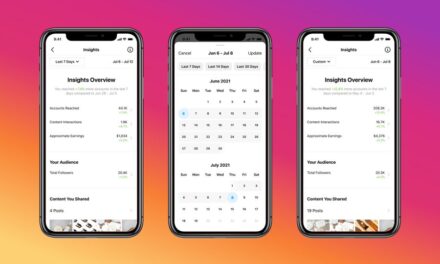Repost from: https://www.marketingtechnews.net/news/2018/aug/28/five-steps-avoid-wasting-your-display-advertising-budgets/
There is a myriad of advertising partners available to buy media and help mobile advertisers to reach their target audiences, and advertisers need to follow clear criteria to find the right ones. In the world of data-driven advertising, it is a common (and logical) practice to distribute advertising dollars based on the cost per conversion each partner is delivering, and those delivering the best price, or in other words, the best ROI, will get the bigger budgets.
And how do advertisers know what partner is generating the highest ROI? They use tracking tools that are responsible for attributing each conversion to the partner responsible for it. That attribution is made by following a set of rules that advertisers can normally configure. One of the most commonly-used models is the last click: the conversion (could be an app install, for example) will be attributed to the partner that generated the last click, within a certain period of time.
It is key for advertisers to set the right attribution rules, so reports show them what is the real value each of its partners is generating. A wrong definition will lead to (inefficient) decisions based on distorted numbers. And here is where the challenge arises: many established advertising partners take advantage of advertisers with little mobile media buying experience, and instead of aligning their goals with the advertiser’s and trying to generate incremental conversions (downloads, leads, sales, etc) they simply focus on looking good in the advertiser’s tracking tool reports. Some advertising partners even go out of their way – or rather, out of the ethical ways – to have conversions attributed to their own channels by committing plain fraud.
The classic example of an advertiser that gets distorted results
Imagine this scenario: a famous brand in the retail sector has a few mobile ad campaigns online in order to generate downloads and sales through its app. It is working with different advertising partners and has set the tracking tool to attribute conversions based on the last click: any user who installs the app and has previously clicked on an ad within the past 7 days will be attributed to the advertising partner who has generated that click. As the app is famous, it has a significant volume of organic downloads.
Now imagine advertising partners A and B: A is buying traffic from high-quality placements with machine learning algorithms who predict expectable high conversion rates and uses creative formats with high impact on users, such as interstitials, video, and native. On the other hand, B decides to buy a massive amount of cheap and very low quality (that’s why it’s cheap) placements, with formats of low impact (such as the ad size 320×50).
Now let’s imagine the advertiser got a new organic conversion. As for any conversion, the tracking tool will look if the user that generated the conversion clicked on any of the ads served in the previous seven days. With the massive volume generated by the advertising partner B – it has generated many more impressions, and will have more clicks than A (even if A has a much better CTR [click-through rate]) – it is likely the tool will have recorded a click from B for that device ID, and if it does, the tracking tool will say that the conversion belongs to B.
Partner B has just been attributed to a conversion that would have happened anyway (organic conversion) and not because of its advertising efforts. Partner B will then show good results in the reporting and the advertiser will probably be giving more budget to B and less to A as, according to results, A generates fewer conversions at higher prices. However, conversions from A have more chances to be the result of its campaigns, unlike B, which is benefiting from organic conversions that are being wrongly attributed to them.
Advertisers can and should take measures to protect themselves and find opportunities for reducing wastage and improve media efficiency.
Five steps to ensure advertising dollars generate incremental value
1. External anti-fraud solution. Tracking partners can provide these tools, and they are useful. But they do have limitations, as reliability can vary according to how up to date they are in an ever-changing world, and many remain vulnerable to fraudsters that fake impressions. Investing in the right tracking and attribution partner for an app is an essential first step, and all reputable attribution companies offer fraud detection solutions.
2. Use an ad server and run “placebo” campaigns. Advertisers should have control over what they are serving in order to get the granular data they require for smart data-driven campaigns. Also, by launching, measuring and analysing results of “control” creatives against “placebo” creatives – which advertise something different to their core products – they can identify the incremental results each campaign, creative and advertising channel provides: if results are the same when you serve your ad and when you do not, those are not results that come from your ad. An ad server can help advertisers identify any advertising channel that is not effective (and one of the reasons for that lack of incremental value could be attribution fraud) but also any creative/campaign that is not working to the advertiser’s advantage. Unlike antifraud solutions, which are very tactical at preventing specific types of fraud, using your ad server allows you to holistically look at effectiveness and prevent fraud in the process.
3. Transparency. Advertisers should be establishing close relationships with transparent and trusted advertising partners. Regardless of whether you’re working with an agency, you should always be informed about suppliers and the technology they are using, and they should feed your ad server with all the data you require.
4. Set the right attribution window. Armed with all the data provided thanks to their tracking tools, an ad-server and transparent advertising partners, advertisers can now process the data to come up with the attribution settings that best identify incremental conversions. Why set up an attribution window of 24 hours post-impression if 99% of the conversions counted that way do not show incremental value versus conversions measured with placebo ads, for example
5. Ongoing efforts. Advertisers should not forget that ensuring the efficiency of advertising campaigns to promote your apps is not a one-time effort. They should continuously process data in order to evaluate the performance of their advertising partners. Media inventory changes every day and so does the user perception of the advertised products.
Conclusion
It’s vital to understand the nature of attribution and how it affects the real success of any display ad campaign. By licensing a basic set of technologies, and trusting transparent advertising partners, advertisers can identify any wastage of budget. Using an ad server and measure results versus placebo campaigns can be key to identify opportunities for improvement that will put the advertiser in the right track for media spend efficiency.















